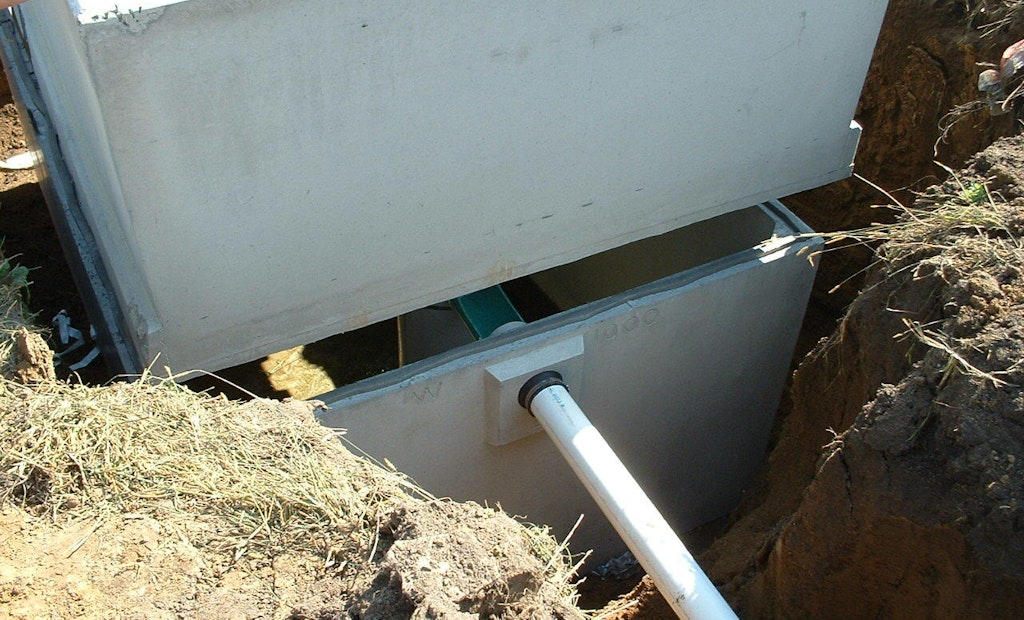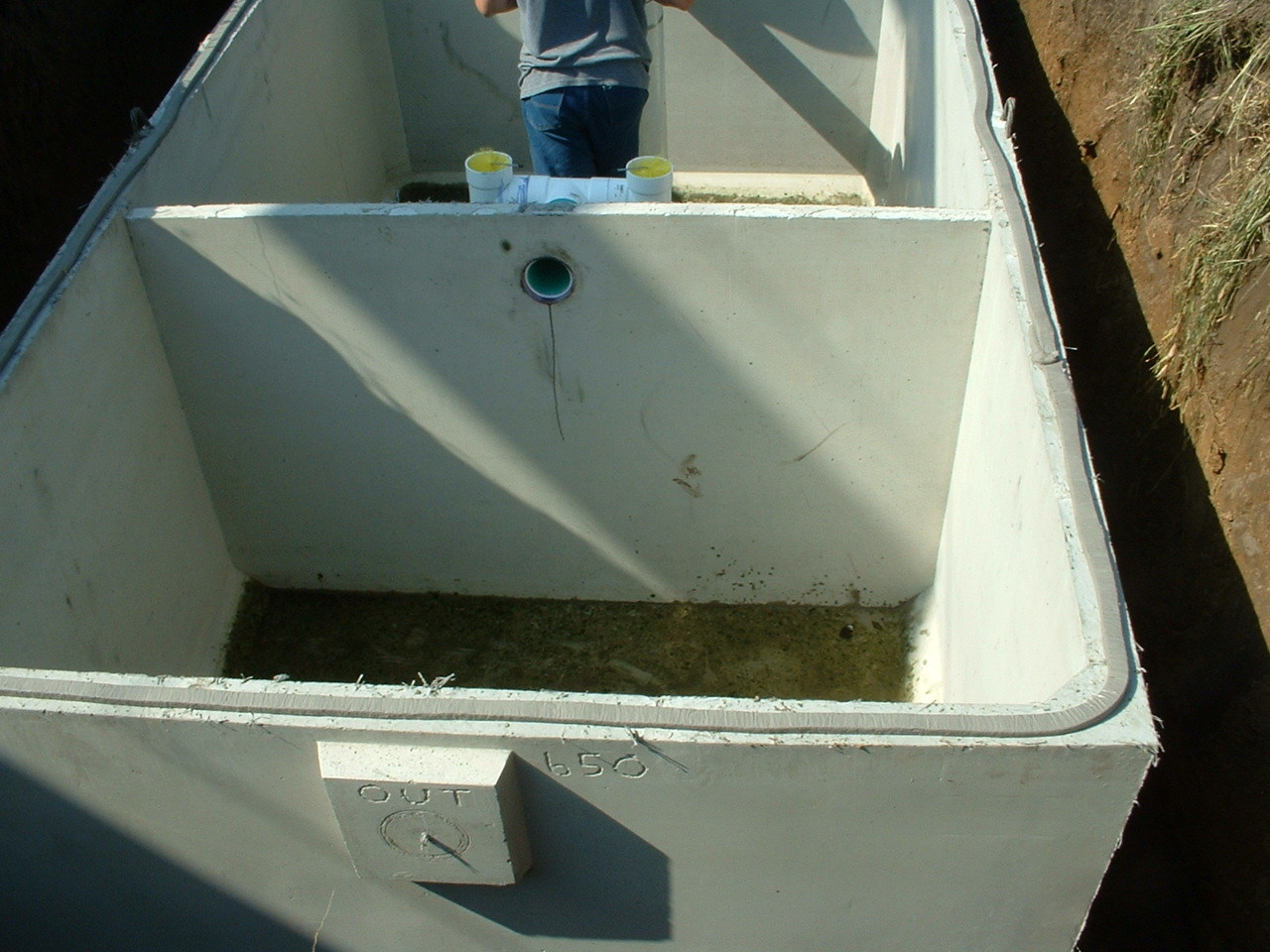Interested in Septic Tanks?
Get Septic Tanks articles, news and videos right in your inbox! Sign up now.
Septic Tanks + Get AlertsMany tanks are constructed in two pieces that are joined either before the tank is delivered or after it arrives at the site. The seam may be located near the top of the tank (top-seam) or near the midsection (midseam). Regardless of the location, the seam must be rendered watertight for proper system function.
Concrete
For concrete tanks, a butyl rubber or asphalt-based (bituminous) mastic is placed in the seam before the pieces are joined. Sealant compounds should conform to ASTM Standard C-990 and AASHTO M198-75B standards that specify relative amounts of butyl rubber and fillers used in production. The seams to be joined should be clean and dry. If this is not the case, mastic manufacturers can provide information on primers to be used with their products. These are typically of three general types:
- Liquid rubber
- Water-based product that dries to a “sticky” state
- All-season type that can be applied to wet or dry surfaces.
Mastics should be applied to concrete tanks in a continuous bead. Opinions vary on how to join two pieces of mastic: The ends can be overlapped and kneaded together or the two ropes can be carefully butted up to one another. Ultimately, it is critical to ensure a good joint seal. When placing mastic in a seam, a higher rope is better than a wider one.
If ambient temperatures are below 50 degrees F at the time of installation, the performance of mastic may be affected. Compressibility in cold temperatures (i.e., ambient temperature below 40 degrees F) is a critical characteristic of a sealant compound. Bituminous (tar-based) mastic is widely used in warmer climates but is not appropriate in colder areas since it tends to crack under those conditions. In any climate, installation at low temperatures can render any seal ineffective. If tank sections are to be joined at temperatures below 40 degrees F, measures should be taken to keep the sealant warm, such as storing it in the cab of the delivery truck prior to use.
Quality mastic should not excessively compress when squeezed between the thumb and forefinger; when stretched, it should not shred or snap. Currently, there are no standards for mastic size, and the actual measurement of nominal 1-inch mastic can vary in size to some extent. Because of this, a critical factor when evaluating the potential of a sealant is its cross-sectional volume. Cross-sectional volume is defined as the geometrical shape of the sealant (i.e., 3/4 inches high by 1 inch wide). Industry experience has shown that a sealant’s cross-sectional height must be compressed a minimum of 30% to create a good seal, with 50% compression being desirable.
For extra assurance of watertightness after assembling the tank halves, a butyl rubber wrap (approximately 1/8 inch thick and 4 to 12 inches wide) can also be applied to the seam. If used, such a wrap should be applied to the seam after the tank has been placed in the excavation.
Some two-piece nonconcrete tanks may be joined by the installer instead of by the manufacturer as a part of the production process. In these instances, the installer should comply with the manufacturer’s specifications for materials and techniques that should be used.
Fiberglass-reinforced plastic septic tanks
Some fiberglass-reinforced plastic tanks are produced in one piece. Others are produced in two pieces using an injection molding process. Two-piece FRP tanks are often shipped unassembled and must be permanently fastened together before placement. The assembly process must be carefully done so the joint will not leak or separate. Generally, this is achieved using appropriate adhesives and stainless steel bolts. The bolts are primarily used to hold the halves in place while the adhesive cures. As with tanks made of other materials, pipe penetrations and access riser joints must be properly sealed to make sure they do not leak. Rubber and plastic pipe seals are routinely used in the production of these tanks.
About the author
Sara Heger, Ph.D., is an engineer, researcher and instructor in the Onsite Sewage Treatment Program in the Water Resources Center at the University of Minnesota. She presents at many local and national training events regarding the design, installation and management of septic systems and related research. Heger is education chair of the Minnesota Onsite Wastewater Association and the National Onsite Wastewater Recycling Association, and she serves on the NSF International Committee on Wastewater Treatment Systems. Ask Heger questions about septic system maintenance and operation by sending an email to kim.peterson@colepublishing.com.







